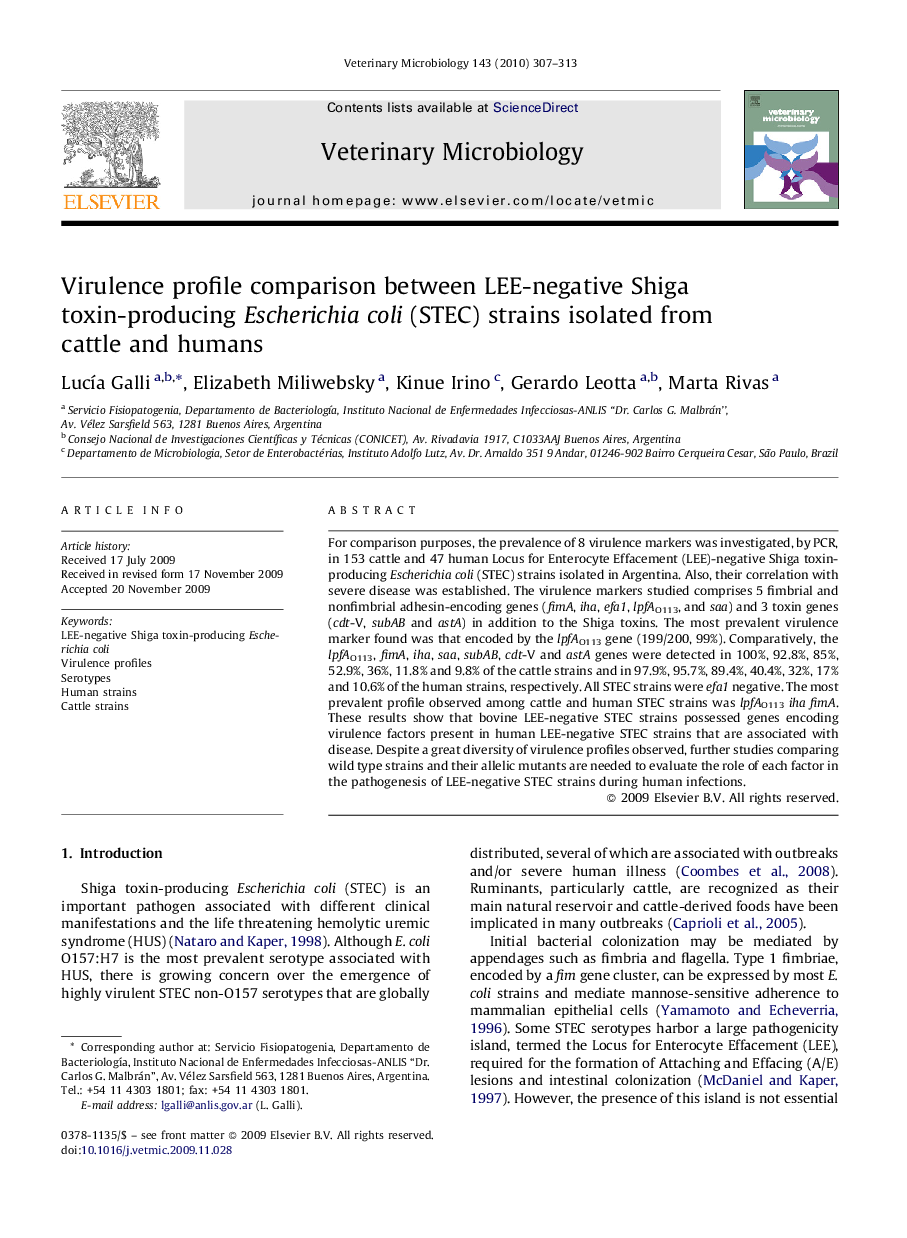| Article ID | Journal | Published Year | Pages | File Type |
|---|---|---|---|---|
| 2468147 | Veterinary Microbiology | 2010 | 7 Pages |
For comparison purposes, the prevalence of 8 virulence markers was investigated, by PCR, in 153 cattle and 47 human Locus for Enterocyte Effacement (LEE)-negative Shiga toxin-producing Escherichia coli (STEC) strains isolated in Argentina. Also, their correlation with severe disease was established. The virulence markers studied comprises 5 fimbrial and nonfimbrial adhesin-encoding genes (fimA, iha, efa1, lpfAO113, and saa) and 3 toxin genes (cdt-V, subAB and astA) in addition to the Shiga toxins. The most prevalent virulence marker found was that encoded by the lpfAO113 gene (199/200, 99%). Comparatively, the lpfAO113, fimA, iha, saa, subAB, cdt-V and astA genes were detected in 100%, 92.8%, 85%, 52.9%, 36%, 11.8% and 9.8% of the cattle strains and in 97.9%, 95.7%, 89.4%, 40.4%, 32%, 17% and 10.6% of the human strains, respectively. All STEC strains were efa1 negative. The most prevalent profile observed among cattle and human STEC strains was lpfAO113iha fimA. These results show that bovine LEE-negative STEC strains possessed genes encoding virulence factors present in human LEE-negative STEC strains that are associated with disease. Despite a great diversity of virulence profiles observed, further studies comparing wild type strains and their allelic mutants are needed to evaluate the role of each factor in the pathogenesis of LEE-negative STEC strains during human infections.
